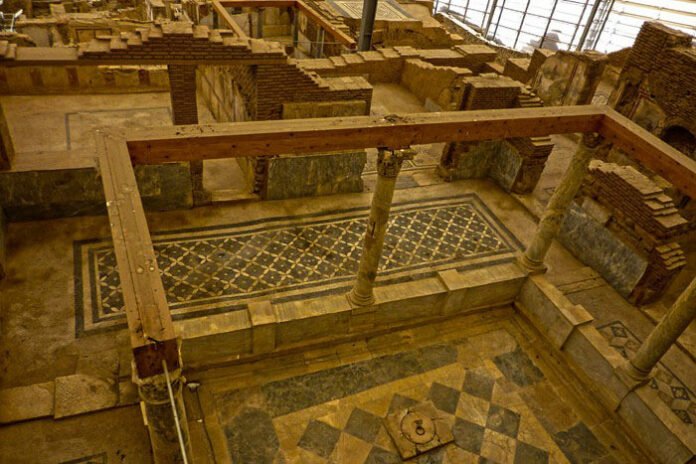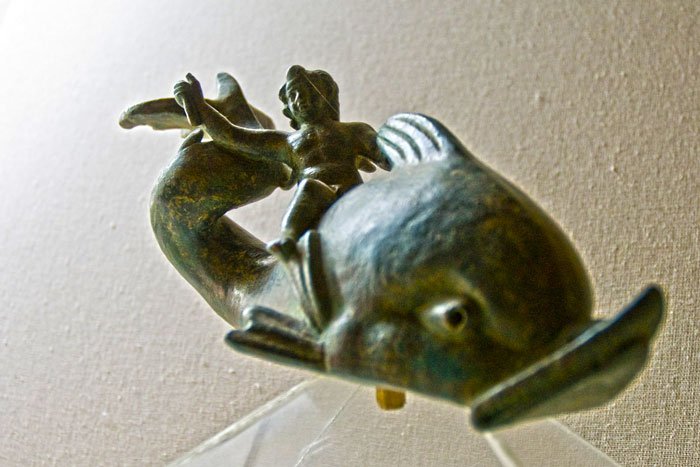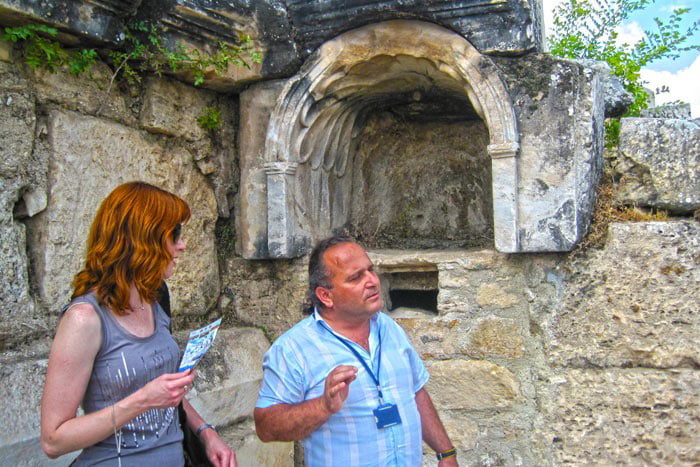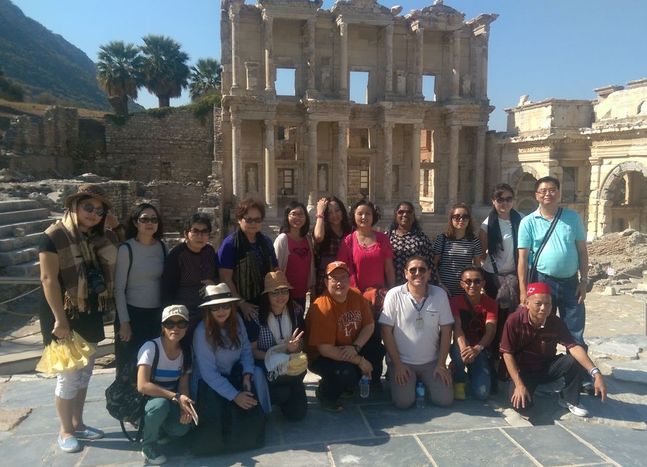Private Guided Ephesus Tours – Explore the Terrace Houses Complex
One of the most impressive stops on private guided Ephesus tours is the Terrace Houses complex. These houses sit on the northern slope of Bulbuldagi Hill, near Curetes Street, opposite the Temple of Hadrian.
So far, two major housing areas have been found—Eastern and Western Complexes. They were built using the Hippodamian plan, where streets meet at right angles. Excavations began in 1960, and restoration continues today. There’s always something new to discover on your sightseeing tour Ephesus.
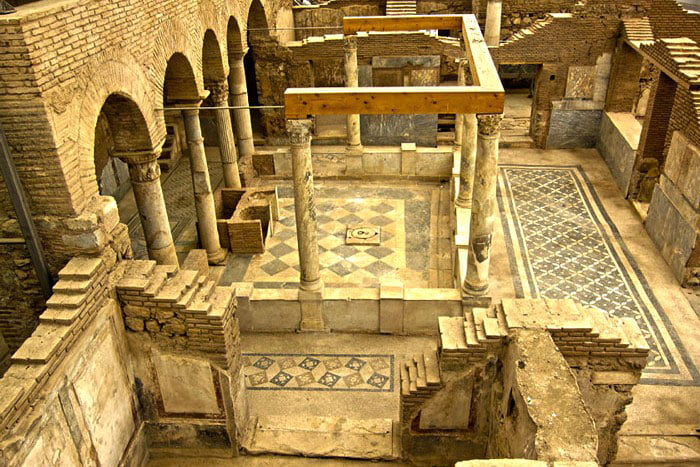
From Ancient Cemetery to Luxury Villas
Before houses stood here, the area served as a graveyard during the classical period. Around 200 BC, large stone walls created three terraces. By the 1st century BC, homes and workshops were built on the site.
As Roman villas were built, older Hellenistic buildings were removed. The wall paintings and graffiti in these houses give us a look into daily Roman life. You’ll see drawings of gladiators, animals, and even love poems.
One special group of graffiti lists daily goods and prices. For example, onions cost 3 asses, and a visit to the baths cost 12 asses. These small details make private guided Ephesus tours more engaging.
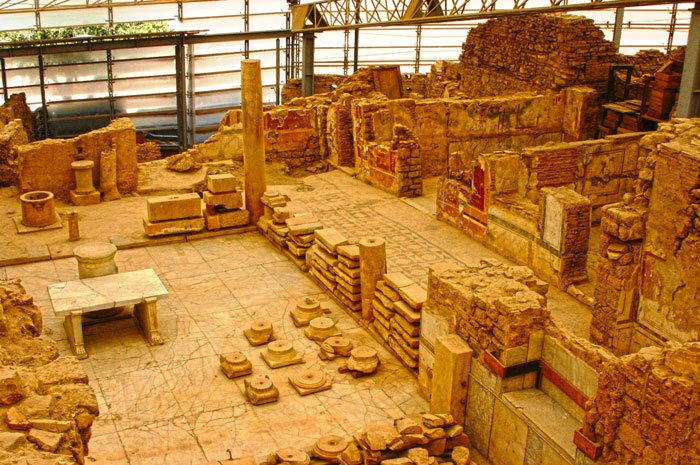
Eastern Complex – Homes with Running Water
The Eastern Complex covers 2,500 square meters and features homes on three terraces. The grandest house is called a domus, once owned by a wealthy family. Middle-class families also lived in nearby homes.
Built in the 1st century AD, these houses remained in use until the 7th century AD. Each house had its own entrance and even running water—a rare luxury at that time.
The domus had two stories, with preserved rooms including a courtyard, dining room, private basilica, and a decorated hall. A fountain and colored marble were added during later renovations. This space shows the luxury of ancient Ephesus. It’s a favorite stop during rose festival tour packages too.
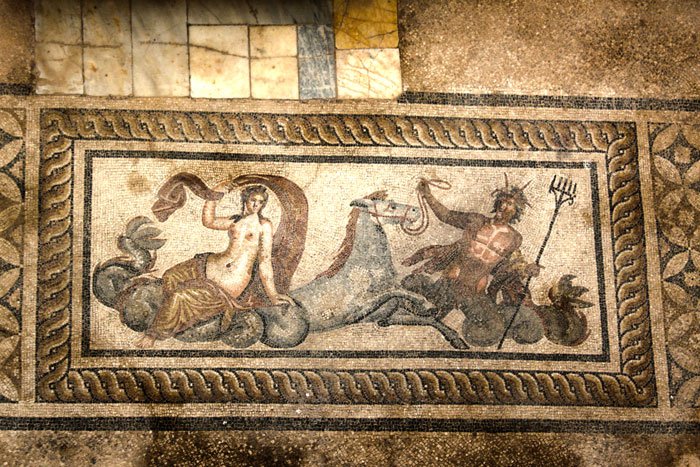
Western Complex – Art, Frescoes, and Roman Style
The Western Complex had at least five large villas, each with courtyards and peristyles. Many rooms still feature stunning frescoes and mosaics. All homes had running water, and some had bathtubs in private bathrooms.
One villa had 12 rooms on the ground floor and measured 900 square meters in total. Inside, you can see a vestibule, kitchen, hall, and decorated floors. The frescoes show scenes with Herakles, Eros, peacocks, and Ariadne.
Another villa has art of birds, flowers, and two Eros figures. It also featured a glass mosaic that once decorated the ceiling of a niche. Although the mosaic was found broken, it has now been carefully restored. You can visit this area during customized round Turkey tours.
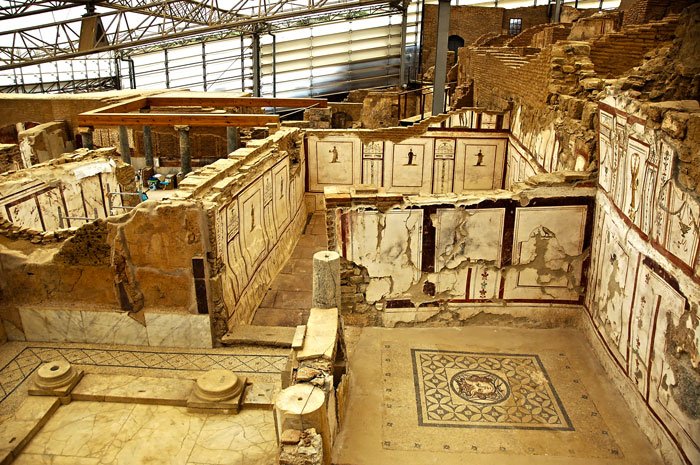
Mosaics of Myth and Beauty
The Terrace Houses contain one of the largest collections of Roman mosaics in Western Turkey. Most mosaics date from the 1st to 3rd centuries AD. Simple black and white geometric designs are common, though some are colorful and detailed.
Figures like Triton, Medusa, Dionysos, and Nereids are shown in bright, beautiful scenes. These artworks connect Roman Ephesus to Italy, showing shared styles and culture.
These stunning villas offer a unique view of ancient luxury. If you’d like to visit, please contact us to plan your private guided Ephesus tours.
